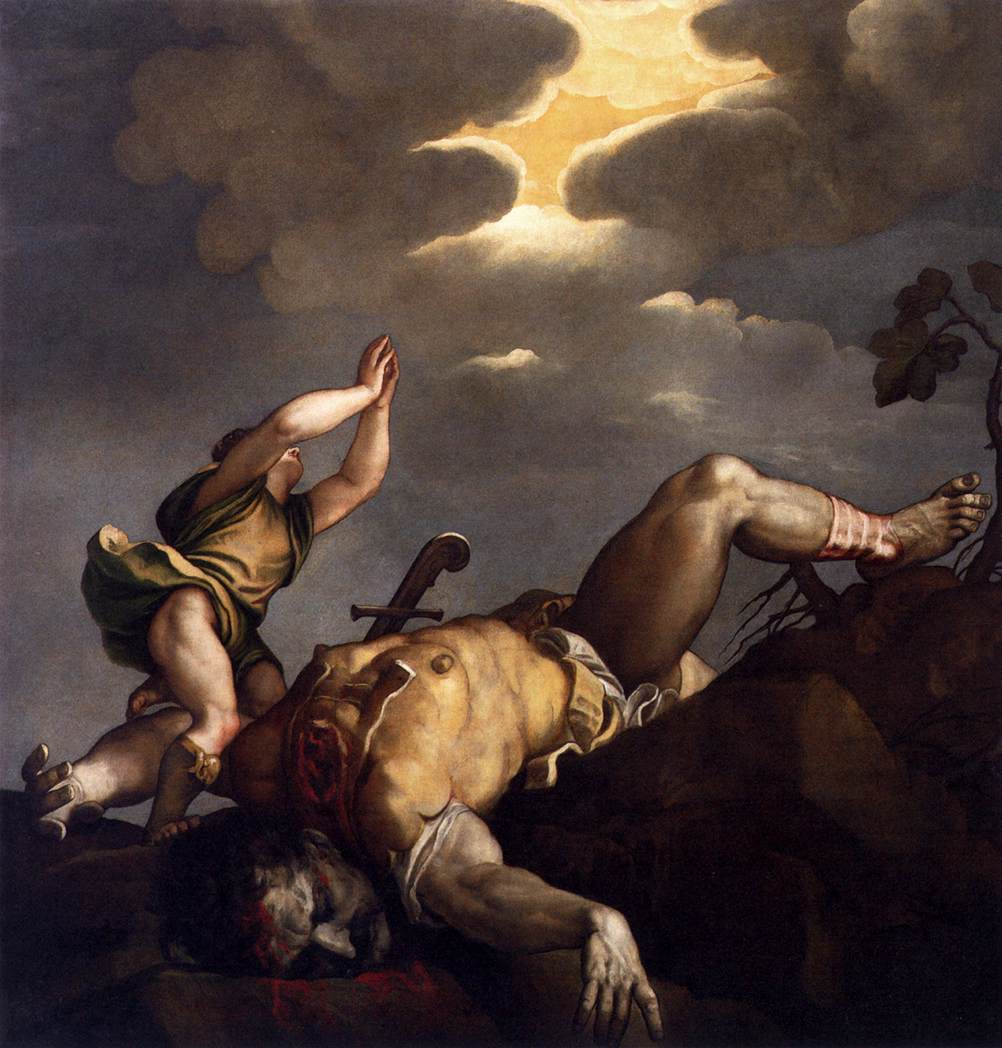
I’m about halfway through Gladwell’s latest book and I’m loving it just as I’ve enjoyed two of his other books, The Tipping Point and Outliers, but I have a few problems with his interpretation of David’s epic battle against the Philistine giant (1 Sam. 17).
I’ll call the giant Goliath as Gladwell does, but to be clear the narrative refers to him as “Goliath” only twice in the chapter (17:4, 23), and uses the term “the Philistine” over ten times as often (e.g., 17:10, 11, 16, 23, 26(2)…) probably because of its derogatory connotations. While you may not frequently insult your friends anymore by calling them “You Philistine” (we do in our family) the term still has negative connotations today.
(To read Gladwell’s own narrative of how he rediscovered his Christian faith while writing D & G, click here for the article in Relevant Magazine.)
A few weeks ago, I was in Bellingham, WA taping courses on the books of 1, 2 Samuel and 1, 2 Kings for Logos Bible Software. Since I was thinking a lot about David’s story for this Samuel course I had decided to focus on Gladwell’s new book for my morning cycle on an exercise bike. Despite my positive inclination toward all works Gladwellian, I found myself arguing with the author in my head as I pedaled.
Everything else I’ve read from Gladwell previously was about subjects I didn’t know much about, but I’m a bit more familiar with the Old Testament, the book of Samuel and particularly, the narrative of my namesake.
Gladwell does good research (using, among other resources, Baruch Halpern’s book, David’s Secret Demons), but concludes that Goliath was a clumsy, half-blind oaf. Goliath’s armor made him immobile and his pituitary gland disorder (acromegaly) impaired his vision so severely that “the world around him is a blur” (p. 14). Goliath was a cross between Andre the Giant (The Princess Bride) and Mr Magoo.
 Gladwell’s arguments are well-argued, but ultimately not persuasive. He focuses on a few obscure secondary aspects of the text and hinges his entire argument around them, ignoring the main thrust of the text. For example, Goliath says, “You come at me with sticks” but David just had one stick, therefore Goliath couldn’t see well.
Gladwell’s arguments are well-argued, but ultimately not persuasive. He focuses on a few obscure secondary aspects of the text and hinges his entire argument around them, ignoring the main thrust of the text. For example, Goliath says, “You come at me with sticks” but David just had one stick, therefore Goliath couldn’t see well.
Why would the Philistines pick a “hero” like the one Gladwell describes to represent them in battle? Even junior high school basketball coaches know that big guys are not necessarily good basketball players. For Goliath to defeat the hundreds or perhaps the thousands of people necessary to be chosen as a national champion he couldn’t have been an “Andre Magoo”, but needed to be more of a “Spartacus Maximus“.
The entire nation of Israel was afraid of Goliath. Saul himself was not only tall, but also quite a warrior (the women later sang of Saul killing thousands: 1 Sam. 18:7; 21:11; 29:5). Warriors are not generally afraid of half-blind oafs.
The way Gladwell and Dohrenwend spoke about the supposed accuracy of ancient slingers (people who used sling-shots), it is surprising that US soldiers are not still using sling-shots to take down the Taliban in Afghanistan. I just don’t buy it.
I realize in the world of publishing, Gladwell is a “giant,” while Lamb is more of a “David”. Think of this post as a smooth stone aimed, not at Gladwell the person, but at his interpretation of one of the best-loved stories in the Bible. While I love to see new things from the text, sometimes the traditional understanding is the right one.
David, the underdog, defeated Goliath the champion with the help of his God.
